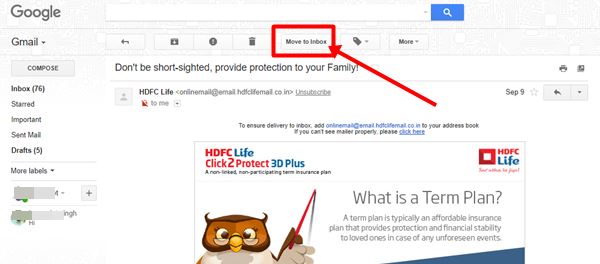

Once all of your emails are selected, click the “ ” ( Archive icon), and all of your emails will transfer to the “All Mail” folder.Choose “All,” “Read,” “Unread” “Starred,” or “Unstarred” depending on what you want to archive.Click on the “ ” ( Select/Unselect Dropdown icon) at the top, above all emails.Here is what you have to do to archive all of your emails together or in bulk: Choose read or unread emails, starred, or even unstarred if desired. You can customize what to archive by using the dropdown options next to the “Select All” box. You also have the option to create a backup folder for easy viewing later, as referenced as “Archives” above, then use it before archiving any emails. Your Inbox becomes empty, but the cluster of emails will still look confusing in the “All Mails” folder, so try to delete the ones you are sure you won’t need before you start archiving. You can archive any or all of your emails with a few simple clicks.
#Where the archive in gmail how to
How to Archive All Gmail Emails or in Bulk As previously mentioned, new replies also unarchive emails. You won’t have to sort through a bunch of emails to find the archived ones since they got stored in your “Archives” folder. Your selected emails now appear in the “Archives” folder, ready to unarchive if you need them, as discussed below. Just don’t forget to use labels instead of the “Move to” option or it won’t work. Once you have the “Archives” folder added, you can use it for future needs.

That’s why you have to use labels instead. Using “Move to” is not an option because it removes the email from the “Inbox” folder. In the process above, you created an archive folder to store your archivable emails, labeled each email to “Inbox” and “Archives,” manually archived them, and can view them in the “Archives’ folder for easy retrieval. The “Archive icon” on the far right of each message is grayed out (lighter gray) if archived, and it won’t show the hand when over it.
:max_bytes(150000):strip_icc()/005-gmail-archived-mail-what-it-is-and-how-to-use-it-4165946-b048e500a5dc4389ae90a575cedb5acd.jpg)
Each email from the previous step now shows two labels: “Inbox” and “Archives.” Gmail returns to your “All Mail” folder.If there is a “minus” in the folder’s box, click on it to change it to a checkmark, then click on “Apply” when finished. Check off “Inbox,” then check the box for “Archives” or whatever you called the folder.If there is a “minus” in a box, click it twice to uncheck it. In the “Labels” menu, uncheck all boxes to start fresh.“Move to” is NOT an option here because it deletes the emails from the “Inbox” folder. Click on “ ” ( Labels icon) at the top.If you mess up, simply click it again to unselect it. Click on “ ” ( Select/Unselect box) next to each message you want to relabel/move.This folder/label displays every message in your account no matter where they reside. In the left navigational panel, scroll down and select the “All Mail” folder.This step creates a folder to store your archives before you archive them so they are easy to find later. Type a folder name to represent your archives, but do NOT choose a parent folder.Scroll down once more and select “Create new label.”.In the left navigational menu, scroll down and click on “More.”.However, since they mix with all other messages, there is a workaround to separate them from the rest. So, when you want to archive some emails you don’t need at the moment, you can easily archive them and view them in the “All Mail” folder. Creating some room in your “Inbox” folder allows you to find critical/essential emails easier.


 0 kommentar(er)
0 kommentar(er)
